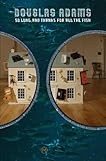If you're looking for a new way to enjoy visiting Scotland, consider doing a whisky tour. Throughout the world, every region that's famous for brewing becomes a destination and depending on where you're going you can find wine tours, rum tours and beer tours - so why not follow the whisky trail. Whisky - the name comes from the Gaelic for water of life - is a major part of Scotland's brewing history. It's brewed in several parts of the country. There are two main types of whisky - malt and grain - with other sub-types, such as single malt whisky (from one distillery and one malted grain), blended malt ( a mix of single-malts) and blended whiskies (malt and grain whiskies blended together). As with wine, whisky can have a different flavor depending on where it originates.
Highlands and Islands
The Highlands and Islands (and Speyside) is one of the biggest brewing regions in the country - and the biggest region overall. The flavor of the whisky will vary according to which part of the region it comes from. Spicy, heathery flavors characterise whiskies from the north of the region, while those from the Midlands tend to be fruitier. Perhaps the most interesting whiskies come from the Speyside area, with delicate, slightly smoky flavors. Some have subtle flavors while others have more in common with sherry. Well known brands such as Macallan and Glenlivet come from this area. Other areas to visit include the Lowlands, which produces softer malts; Campbelltown, which produces briny single malts; and Islay, a 25 mile long island with 8 distilleries, which produces malts with a seaweedy tang.
Choosing Your Whisky
Once you've experienced the different whiskies, how do you select the one that you'll drink most? As well as considering the different regional flavors, consider factors like cask strength. Cask strength whiskies tend to be stronger, with no water added when they are in the cask. Another important factor is the percentage of alcohol by volume, which is higher for cask strength whiskies at 50-60% compared with 40-43% for non cask strength whiskies. Time in the cask, the type of cask and the conditions it's stored in will all affect this figure. The age of the whisky is also worth consideration. You will want to know how long it was in the cask before bottling and, if possible, when it was bottled. Too much work? Then you'll be pleased to know that you can search online for a Whisky Flavor Map and choose your perfect whisky that way.
Sharon Hurley Hall writes for Scottish Hampers which has a great selection of Scotch whiskies in their Xmas food hampers.



























































No comments:
Post a Comment
Please leave us some love...and have yourself a groovy day~!! Peaces...xoxo